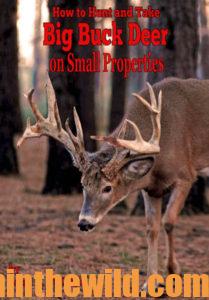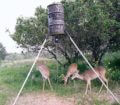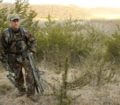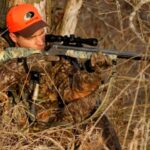Editor’s Note: To learn more about the deer living on your hunting-club or hunting-lease lands, I’ve talked with Brian Murphy, a wildlife biologist and the executive director for the Quality Deer Management Association (QDMA) https://www.qdma.com/, about the effective use of motion-sensor cameras for better deer management and to better protect the deer. Murphy says that this type of deer census may capture photos of 95% of a deer herd in 10 days.
 John E. Phillips: Brian, motion-sensor cameras have had a lot of publicity in the last few years for deer hunting. How can trail cameras be useful and effective for deer managers as well as deer hunters?
John E. Phillips: Brian, motion-sensor cameras have had a lot of publicity in the last few years for deer hunting. How can trail cameras be useful and effective for deer managers as well as deer hunters?
Brian Murphy: Obviously, motion-sensor cameras are highly effective when used to catalogue deer of various sexes and ages. Most hunters are interested in cataloguing the numbers or the sizes of bucks on their properties, but if they’ll spend more time looking at the deer and dividing them into age categories like yearling, 1-1/2, 2-1/2-, 3-1/2- and 4-years or older, the hunters will know each age class of deer living on the property. Too, this process can help to identify the individual bucks they may want to try and harvest during deer season.
Phillips: In a healthy deer herd, what percentage of bucks should fall in the 1-1/2-, 2-1/2- and older-age classes?
Murphy: In most herds, the younger bucks will be the most numerous because they’ve just been born and haven’t had an opportunity to go through a deer season. Buck fawns will be more numerous than yearling bucks and 2-1/2– to 3-1/2-year olds. Minimum size and number of points also affect the number of deer in the different classes. If all the 1-1/2-year-old bucks are protected on the property, than naturally the land, the club or the lease will have more 1-1/2-year-old bucks than 2-1/2-year-old bucks. Generally, most quality deer managers want to protect the 1-1/2-year-old bucks, and on some hunting leases, they’ll even protect the 2-1/2-year-old bucks. With either of these management  programs, you’ll see more bucks under the age of 3-1/2-years old. However, under a quality-managed program, you can expect 25 % or more of your bucks to be 3-1/2-years old or older. With intensive management, you may have as much as 50 % of your bucks 3-1/2–years or older. Quality motion-sensor cameras allow you to determine how good a job of deer management you’re actually doing.
programs, you’ll see more bucks under the age of 3-1/2-years old. However, under a quality-managed program, you can expect 25 % or more of your bucks to be 3-1/2-years old or older. With intensive management, you may have as much as 50 % of your bucks 3-1/2–years or older. Quality motion-sensor cameras allow you to determine how good a job of deer management you’re actually doing.
Trail cameras have been proven during a number of extensive studies to be as good, if not better, than the vast majority of deer-census techniques known to be used for white-tailed deer, particularly in forested habitat, primarily what’s found in the southern and the eastern portions of the country. In other sections of the country like Texas and other arid states, helicopter- and fixed-winged plane censuses have shown to be effective. However, even these aerial censuses don’t seem to be as accurate as the censuses motion-sensor cameras make.
 To learn more about hunting, go to John E. Phillips’ books and learn the tactics small property owners have used successfully by checking out John E. Phillips’s book, “How to Hunt and Take Big Buck Deer on Small Properties” at https://www.amazon.com/dp/B00OOC2T0Y#, available in Kindle, print and Audible versions.
To learn more about hunting, go to John E. Phillips’ books and learn the tactics small property owners have used successfully by checking out John E. Phillips’s book, “How to Hunt and Take Big Buck Deer on Small Properties” at https://www.amazon.com/dp/B00OOC2T0Y#, available in Kindle, print and Audible versions.
 To receive your free book on “How to Make Venison Jerky,” go to https://www.emailmeform.com/builder/form/Ece3UZVcOo52cKPJcL.
To receive your free book on “How to Make Venison Jerky,” go to https://www.emailmeform.com/builder/form/Ece3UZVcOo52cKPJcL.










